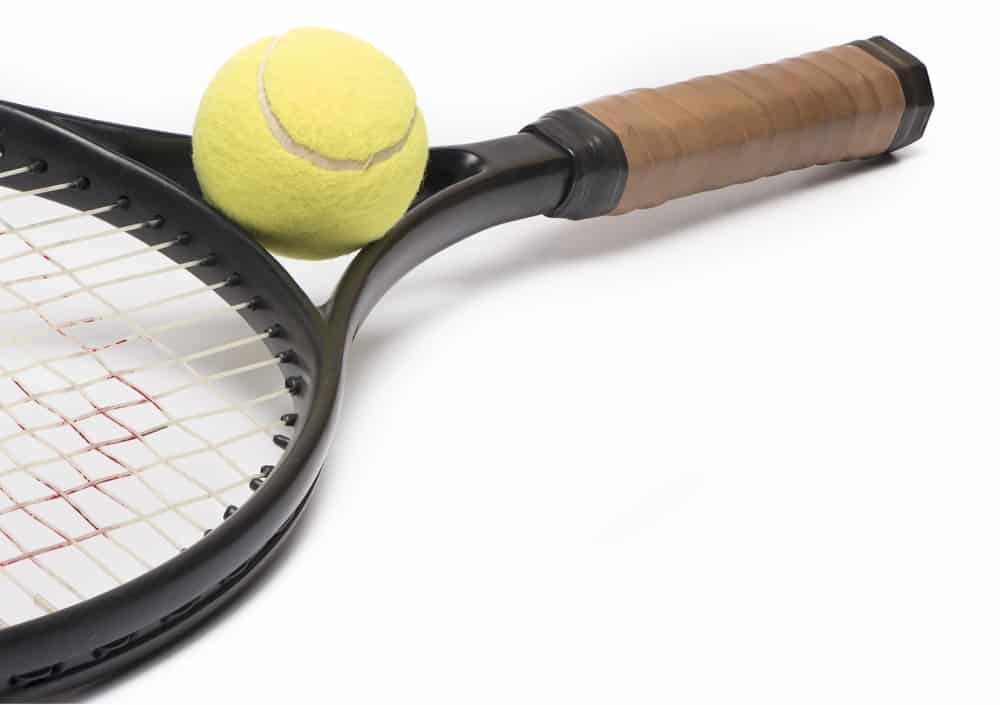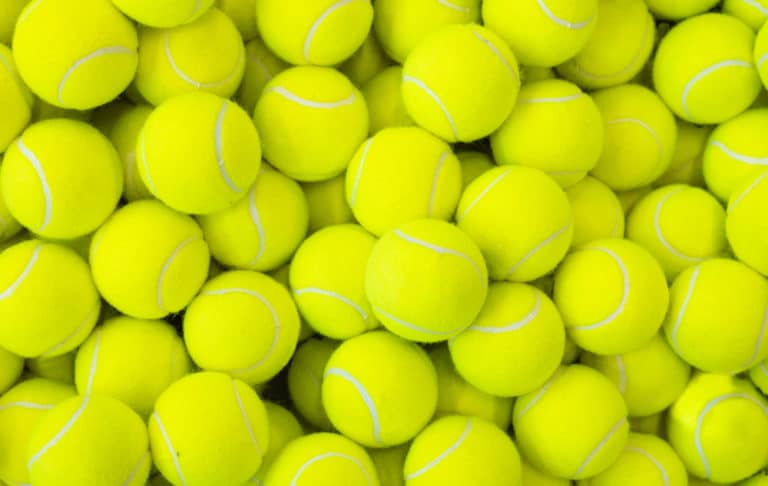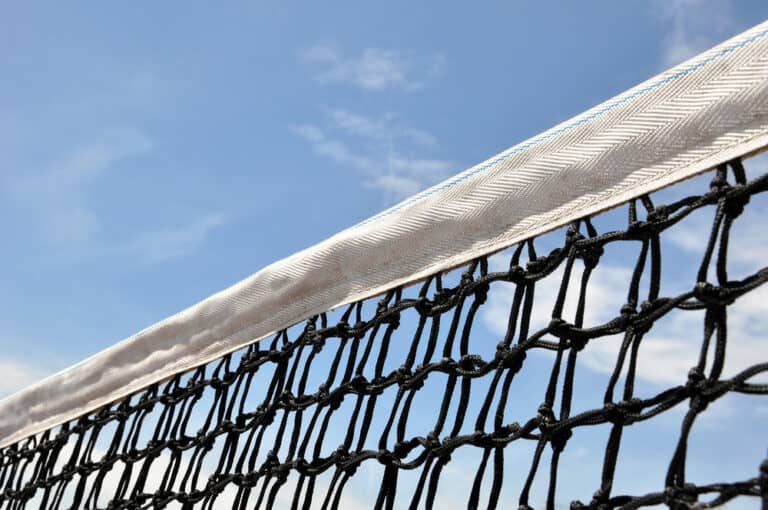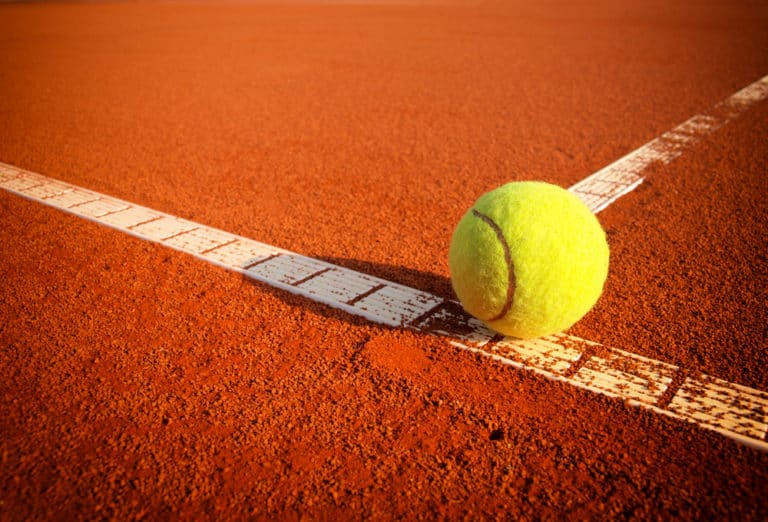Why Do Tennis Players Have Leather Grips?
If you are a fan of sport and tennis specifically, you might have noticed that most well-known players and many others use leather grips. There are different tennis racket grips, and synthetic grips are usually better cushioned and cheaper. Since there are also other types of grips, you might be wondering why leather grips seem to be the favored material for so many people.
Leather grips are better and preferred over synthetics for tennis players who want a tight grip on their rackets and better feedback from their opponent’s strike. Though some players like the factors mentioned above, leather grips are heavier and more expensive than synthetic ones.
Though the answer to this tennis-related question might seem simple, there is a lot more detail that I include in the discussion below. Moreover, if you want to buy a new racket or a different grip for your racket, some factors can make or break how you enjoy the game. Keep reading to see why leather grips are so popular and what you should expect.
What Makes Leather Grips So Popular
There are numerous explanations why tennis players might prefer using leather grips over their synthetic counterparts. However, in the end, it is about personal preference. There are quite a couple of differences between the two grip types, and both have their advantages and disadvantages. Below are more delicate discussions on each of the aspects to consider.
Firmer Grip On Your Racket
One of the most compelling reasons tennis players play with leather grips is because they allow the user to have a firmer handle on their rackets. This consideration might not be high on the priority list for a casual player. However, if you enjoy the sport or are a professional player, using a leather grip can make a significant difference.
As I will discuss below, by allowing players to grip their tennis rackets more firmly, leather grips allow for more weight and more maneuverability when it matters. Leather grips assure the player that the racket will not slip out of your hand when taking a particularly powerful or strange swing.
Increased Feedback And Better “Feel”
Another reason a tennis player might prefer using a leather grip is because of the increased feedback they can receive from an opponent’s shot. The increased sensitivity and feedback when receiving the ball allow the tennis player to feel the depth and power of their opponent much more accurately.
Though for some players, this might seem counterintuitive, there is a large portion of tennis players that enjoy being able to feel and truly understand their opponent based on the force they use to return or serve the ball. For some, leather grips feel more natural and traditional, allowing them to feel every action to a greater extent and enjoy the game the way they prefer.
Added Weight And Balance
A lesser-known yet crucial aspect of leather grips is the added weight they give your tennis racket. This aspect, again, might seem counterintuitive for many players, but the key is to remember that weight influences the power of your swing. The heavier a racket is, the more power will be put-out onto the ball, making it go faster and sometimes having a more significant impact.
However, the increase in weight when using a leather strap is minimal, but enough to make a difference where it’s needed. Since the weight gets added to the back of the racket, there will be only a tiny increase in swing weight, but the stability of the racket could improve much more significantly. The increased stability can dramatically impact the racket if other added weight is in the front.
Finding Your “Grip” And Added Durability
Since leather grips are usually significantly more robust and durable than synthetic or cushioned grips, they allow the player to feel the racket much more quickly. If you play tennis regularly, there is sure to be a specific place where your hand feels most comfortable, and you get the most of every swing. This feeling of comfort and familiarity is significant to practiced players.
If you cannot feel comfortable with your racket in hand, you are less likely to achieve in a specific match. Since leather grips can last a lot longer and, to an extent, shape around your hands, you can find your grip “sweetspot” much more quickly and get into an area of focus on the match. Additionally, the added durability of your grips means that you have to replace them less often.
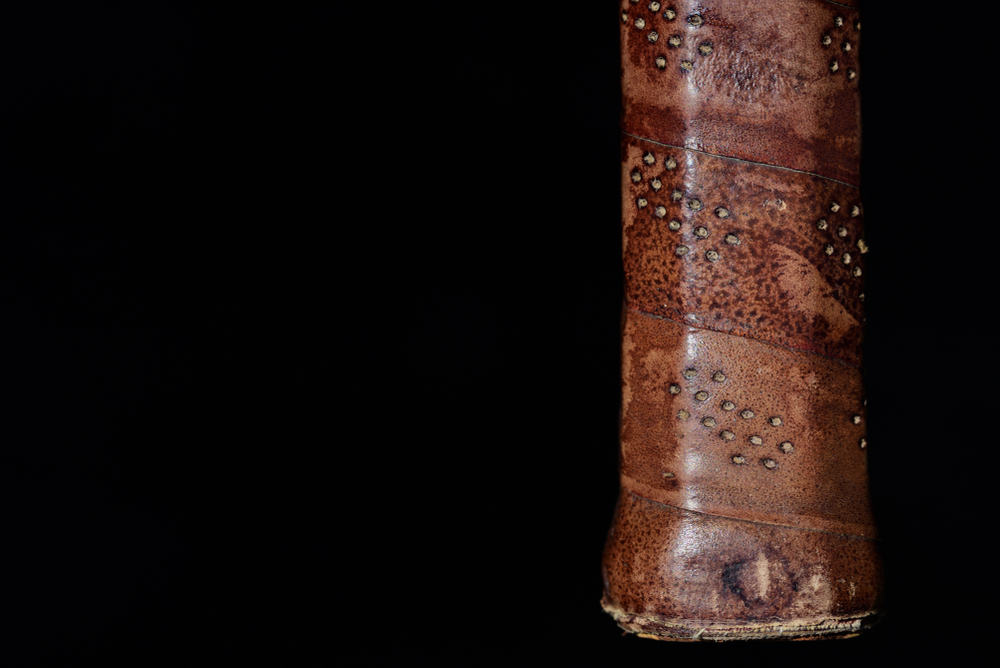
The Down Sides Of Using A Leather Grip
As with most things in life, there are some other aspects and negatives to consider when using leather grips. Some of these aspects can be more or less important based on how regularly and at what level you play tennis. Below are some of the things to consider.
The Price
Using a natural material and a more durable material for your tennis racket’s grips will naturally be more expensive than getting easier and cheaper to make synthetic grips. It is, however, important to mention that the prices between the two grip materials do not differ by much.
Based on the recommendations I have found from experienced tennis players, the grips usually differ in price by no more than a couple of dollars. If you are looking to start playing and want to make the right choice of which grip to use, the price will likely not be the determining factor.
Leather Grips Are Harder
Though a more durable material, leather is much more likely to hurt you and is much harder than synthetic grips. Most tennis players who have a preference for the grip material will have played tennis for quite a while, allowing their hands to become harder to become less damaged during a match.
Unfortunately, this factor is one of the few cons of using leather grips to play tennis. Leather grips allow you to have a firmer grip on your racket, which hurts your hands and can cause minor injuries if your hands can not handle them yet and your opponent is particularly powerful.
Leather Grips Are Less Comfortable And Heavier
Though the added weight of the leather grips is, for many, a good thing, the added weight can also be a negative aspect for some. The added weight of a leather grip is barely significant, but for some, even the slightest added weight can substantially impact their ability to perform.
Additionally, since the grips are harder, a factor I discuss above, the comfort level when holding onto leather grips is much less than that of synthetic grips. Synthetic grips often come with added cushioning, which helps newer players or players that need that extra grip comfort, but leather grips rarely offer you this extra luxury.
Conclusion
There are plenty of reasons why tennis players prefer using leather grips over synthetic grips. However, some of these reasons can also as efficiently serve as a negative aspect of leather grips. If you are looking to try a different grip type on your tennis racket, it is always best to try them for yourself, feel the added benefit, and understand why so many use them.
References
- https://tt.tennis-warehouse.com/index.php?threads/pros-and-cons-of-leather-grips.311835/
- https://www.usta.com/en/home/improve/gear-up/national/tennis-grips–synthetic-vs–leather.html
- https://tt.tennis-warehouse.com/index.php?threads/why-do-all-pros-use-a-leather-grip-under-their-overgrip.251133/
- https://longislandtennismagazine.com/article3139/battle-grips
- https://youtu.be/8J3kBAQPtWE

